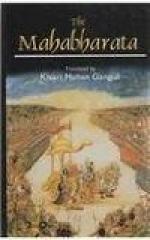277. It would be curious to see how the commentator Nilakantha seeks to include within these five the eight forms of marriage mentioned by Manu. The fact is, such parts of the Mahabharata are unquestionably more ancient than Manu. The mention of Manu is either an instance of interpolation or there must have been an older Manu upon whose work the Manu we know has been based. The Asura and the Rakshasa forms are unequivocally condemned. Yet the commentator seeks to make out that the Rakshasa form is open to the Kshatriyas. The fact is, the Rakshasa was sometimes called the Paisacha. The distinction between those two forms was certainly of later origin.
278. Thus, there was no difference, in status, in ancient times, between children born of a Brahmana, a Kshatriya or a Vaisya mother. The difference of status was of later origin.
279. Nagnika is said to be one who wears a single piece of cloth. A girl in whom the signs of puberty have not appeared does not require more than a single piece of cloth to cover her. The mention of Nagnika, the commentator thinks, is due to an interdiction about wedding a girl of even ten years in whom signs of puberty have appeared.
280. When a father happens to have an only daughter, he frequently bestows her in marriage upon some eligible youth on the understanding that the son born of her shall be the son, for purposes of both Sraddha rites and inheritance, not of the husband begetting him but of the girl’s father. Such a contract would be valid whether expressed or not at the time of marriage. The mere wish of the girl’s father, unexpressed at the time of marriage, would convert the son into a son not of the father who begets him but of the father of the girl herself. A daughter reserved for such a purpose is said to be a putrikadharmini or ’invested with the character of a son.’ To wed such a girl was not honourable. It was in effect an abandonment of the fruits of marriage. Even if dead at the time of marriage, still if the father had, while living, cherished such a wish, that would convert the girl into a putrikadharmini. The repugnance to wedding girls without father and brothers exists to this day.
281. For understanding the meanings of Sapinda and Sagotra see any work on Hindu law civil or canonical.
282. These verses are exceedingly terse. The commentator explains that what is intended is that under the third and fourth circumstances the giver of the girl incurs no sin; under the second, the bestower of the girl (upon a person other than he unto whom a promise had been made) incurs fault. The status of wife, however, cannot attach simply in consequence of the promise to bestow upon the promiser of the dower. The relationship of husband and wife arises from actual wedding. For all that, when the kinsmen meet and say, with due rites, ’This girl is this one’s wife,’ the marriage becomes complete. Only the giver incurs sin by not giving her to the promised person.




